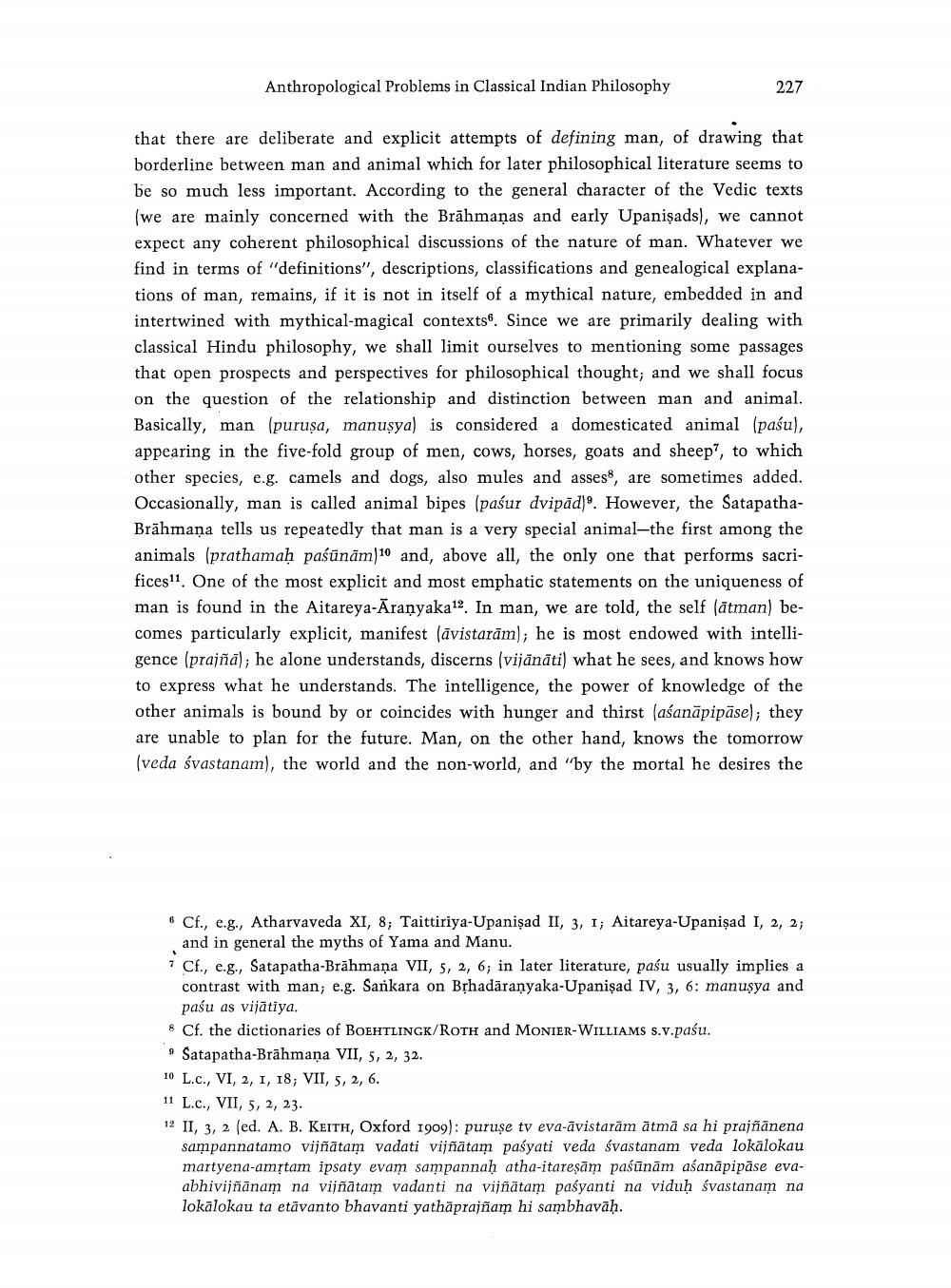Book Title: Anthropological Problems In Classical Indian Philosophy Author(s): Wilhelm Halbfass Publisher: Wilhelm Halbfass View full book textPage 3
________________ Anthropological Problems in Classical Indian Philosophy that there are deliberate and explicit attempts of defining man, of drawing that borderline between man and animal which for later philosophical literature seems to be so much less important. According to the general character of the Vedic texts (we are mainly concerned with the Brahmanas and early Upanisads), we cannot expect any coherent philosophical discussions of the nature of man. Whatever we find in terms of "definitions", descriptions, classifications and genealogical explanations of man, remains, if it is not in itself of a mythical nature, embedded in and intertwined with mythical-magical contexts. Since we are primarily dealing with classical Hindu philosophy, we shall limit ourselves to mentioning some passages that open prospects and perspectives for philosophical thought, and we shall focus. on the question of the relationship and distinction between man and animal. Basically, man (purusa, manusya) is considered a domesticated animal (pasu), appearing in the five-fold group of men, cows, horses, goats and sheep', to which other species, e.g. camels and dogs, also mules and assess, are sometimes added. Occasionally, man is called animal bipes (pasur dvipäd. However, the SatapathaBrāhmaṇa tells us repeatedly that man is a very special animal-the first among the animals (prathamaḥ paśūnām)" and, above all, the only one that performs sacrifices11. One of the most explicit and most emphatic statements on the uniqueness of man is found in the Aitareya-Aranyaka1. In man, we are told, the self (atman) becomes particularly explicit, manifest (ävistaräm); he is most endowed with intelligence (prajña); he alone understands, discerns (vijānāti) what he sees, and knows how to express what he understands. The intelligence, the power of knowledge of the other animals is bound by or coincides with hunger and thirst (aśanapipāse), they are unable to plan for the future. Man, on the other hand, knows the tomorrow (veda śvastanam), the world and the non-world, and "by the mortal he desires the 227 Cf., e.g., Atharvaveda XI, 8; Taittiriya-Upanisad II, 3, 1; Aitareya-Upanisad I, 2, 2; and in general the myths of Yama and Manu. Cf., e.g., Satapatha-Brāhmaṇa VII, 5, 2, 6; in later literature, pasu usually implies a contrast with man; e.g. Sankara on Bṛhadaraṇyaka-Upanisad IV, 3, 6: manusya and paśu as vijātiya. 8 Cf. the dictionaries of BOEHTLINGK/ROTH and MONIER-WILLIAMS s.v.paśu. Satapatha-Brāhmaṇa VII, 5, 2, 32. 10 L.C., VI, 2, 1, 18; VII, 5, 2, 6. 11 L.c., VII, 5, 2, 23. 12 II, 3, 2 (ed. A. B. KEITH, Oxford 1909): puruse tv eva-avistarām ātmā sa hi prajñānena sampannatamo vijñātam vadati vijñātam paśyati veda śvastanam veda lokālokau martyena-amṛtam ipsaty evam sampannaḥ atha-itareṣām paśūnām aśanāpipāse evaabhivijñānam na vijñātam vadanti na vijñātam pasyanti na viduḥ śvastanam na lokālokau ta etävanto bhavanti yathaprajñam hi sambhavaḥ.Page Navigation
1 2 3 4 5 6 7 8 9 10 11 12
